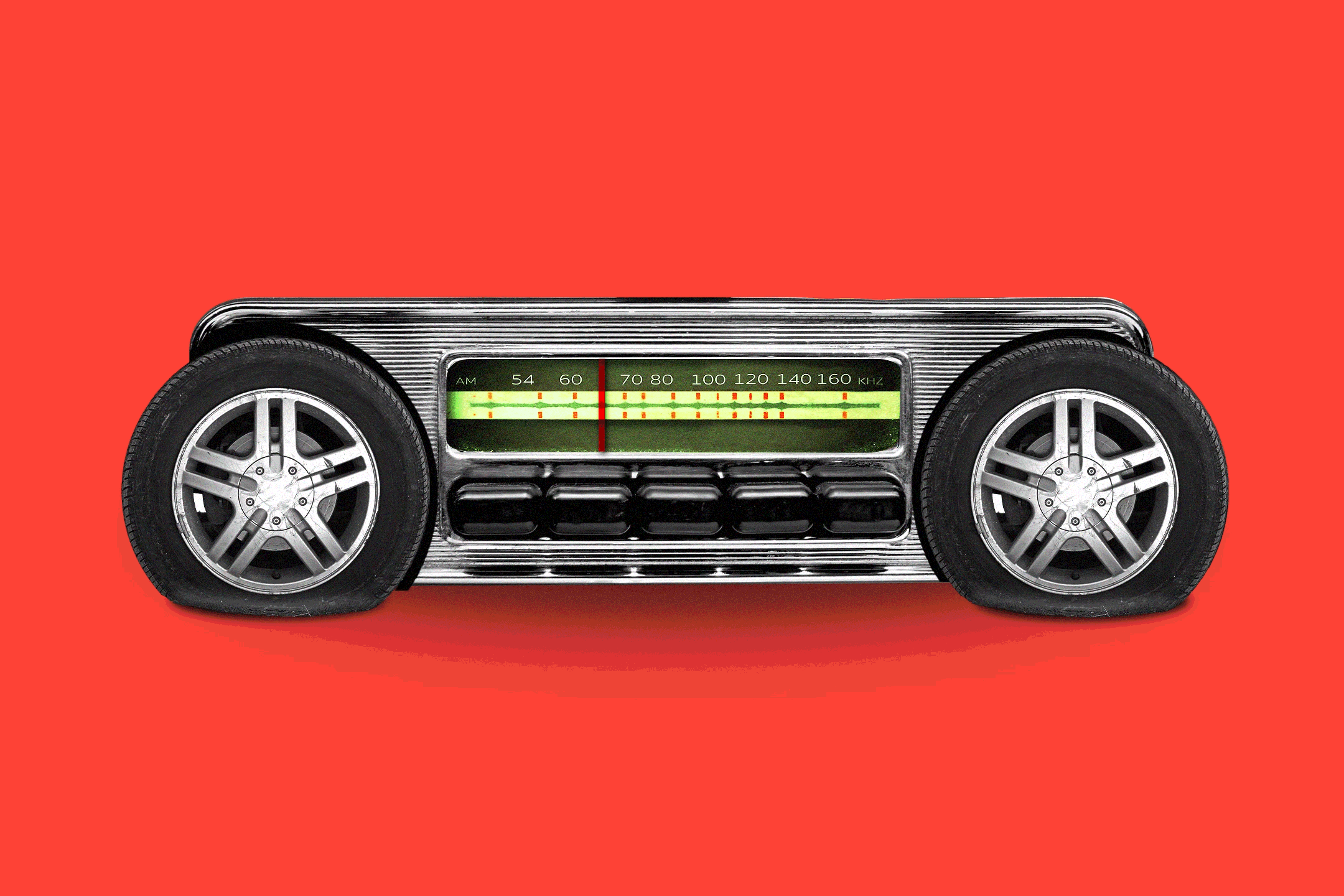THE CUTTING EDGE: COMPUTING / TECHNOLOGY / INNOVATION : Radio Revolution : At Least That’s What Satellite Backers Hope
Gary Noreen believes he has seen the future of radio, and it is RadioStar.
With its CD-quality sound, 10 national music channels and a screen that displays everything from a song’s artist and title to a map of current traffic conditions, RadioStar could make today’s AM-FM radio seem as outdated as black-and-white TV.
At least Noreen hopes so. As chairman and chief executive of Radio Satellite Corp., the La Canada Flintridge-based firm behind RadioStar, he is one of a number of entrepreneurs around the country hoping to cash in on a new generation of satellite-delivered radio services capable of being broadcast directly to moving cars.
“We’re adding a whole new dimension to radio,” Noreen says.
The Federal Communications Commission is expected to issue rules governing a new satellite band devoted to radio later this year or early next year. Once that happens, several firms will be poised to start delivering satellite radio service in two to three years.
“This is the future of radio,” said David Margolese, chairman and chief executive of Washington-based CD Radio, which proposes to sell $10-a-month subscriptions to a national commercial-free, 50-channel service, a radio equivalent of cable television.
Not everyone is convinced that satellite radio will be such a boon. For one, it will require people to buy new radios in addition to a subscription. And the inherently local nature of radio staples such as weather and traffic reports could limit the appeal of national channels.
The National Assn. of Broadcasters opposes the speedy creation of high-quality national “S-band” stations because they threaten to put traditional radio stations out of business by luring away both listeners and advertisers, said Patricia McNeill, a spokeswoman for the Washington-based trade group.
“We feel that satellite-delivered radio is a threat to the historical role that terrestrial radio has played in the community,” McNeill said. “The market is already saturated with radio stations.”
Entrepreneurs believe there will be plenty of takers for CD-quality radio broadcasts from satellites to radio receivers anywhere in the country--from desolate stretches of rural countryside to hard-to-reach canyons in Malibu. The newfangled radios will not only display a station’s number or call letters, but also the artist and title of the song playing. Some even promise radios with picture screens to display weather forecasts and stock quotes.
Some listeners are already getting a preview of what’s to come. Radio Data System networks--which link stations in multiple markets and broadcast alphanumeric messages in addition to channel numbers--are gaining ground. And satellite television provider DirecTv, a unit of Hughes Electronic Corp., uses its satellites to beam 29 commercial-free music channels into the home stereo units of 90% of its 885,000 subscribers.
*
In the future, though, satellite radio operators will offer a much broader range of data services--and be able to broadcast directly to moving vehicles. To receive satellite signals, cars and trucks will require silver-dollar-size satellite dishes and special radio receivers capable of decoding the S-band transmissions along with traditional AM and FM broadcasts.
Noreen, who by day works as a satellite communications specialist at the Jet Propulsion Laboratory in Pasadena, has spent six years designing RadioStar, which he says will enhance terrestrial radio stations in addition to broadcasting 10 national channels via satellite.
For about $10 a month, Radio-Star users will be able to select a station according to format--rap, country or classical, for example--instead of by dialing the station’s number. A screen will display the artist and title of the song playing, along with a list of the songs coming next. Terrestrial AM and FM stations can send their playlists to RadioStar to have their artist and title information broadcast just like the satellite stations.
And that’s just for starters, Noreen says. If a listener likes the song on the radio, he or she can order it by pressing a button on a touch-sensitive screen, beaming the order in on the same airwaves used by two-way pagers. Drivers in distress could also use the system to summon a police officer or tow truck.
Radio Satellite’s investors--who have put roughly half a million dollars into the venture--plan to lease the necessary satellite capacity. Rivals, on the other hand, plan to launch their own satellites. CD Radio, for example, has plans to launch two satellites with Loral Corp. after the FCC issues rules and licenses for S-band transmissions.
*
Seattle-based Digital Satellite Broadcasting Corp. also expects to launch its own satellite, which will provide nationwide service and supply 30 “spot beams” to specific metropolitan areas, said Richard L. Anglin, the company’s founder. He has already been solicited by someone who would like to use the Denver spot beam to broadcast a mountain recreation channel to tourists--and the advertisers that cater to them.
The new generation of satellite radio providers pledge that with a total of 160 national channels scheduled to enter the market, niche programs like that one will finally find a home on the radio dial. And the new channels aim to provide the rest of America with the kinds of specialized programming--in languages other than English, for example--that now exists only in major metropolitan areas such as Los Angeles.
The financial hurdles are daunting, however. Margolese of CD Radio says his company will need to attract 350,000 customers to break even. According to a study commissioned by CD Radio, 80% of a radio station’s revenue comes from local advertisers--the kind that won’t defect to national stations. The FCC may even prohibit satellite stations from selling commercial time.
And consumers will have to buy new radios. Radios capable of receiving S-band signals and the accompanying mini-dish are expected to cost between $200 and $300. (By 2000, they may be installed at the car factory.)
In the meantime, Radio Data System, or RDS, provides a small taste of what’s to come. So far, roughly 400 radio stations around the country are linked to the RDS system, which mixes text data into the signal beamed over the airwaves. Of the estimated 2 billion AM-FM radios on the road today, about 750,000 are equipped to decode RDS signals. RDS radios typically cost between $20 and $30 more than their traditional counterparts, said Steve Hill, who is recruiting stations for the new service on behalf of the Electronic Industries Assn.
Radios equipped with RDS allow listeners to select stations based on format and link stations in markets around the country. For example, if a listener is tuned to a National Public Radio station in Los Angeles and drives so far south that the signal becomes faint, an RDS radio automatically tunes itself to the sister station in San Diego, Hill said.
Like the upcoming S-band receivers, RDS radios have an alphanumeric display to broadcast artists and song titles. Stations have also used it to display their phone numbers or messages from advertisers. RDS radios can also put a cassette or compact disc on pause to break in with traffic, weather or emergency reports, raising the volume to get the listener’s attention.
“It is technology that makes radio much easier for listeners to use,” Hill said.
(BEGIN TEXT OF INFOBOX / INFOGRAPHIC)
Satellite Radio: Heavenly Profits?
A handful of companies are planning to launch a total of 160 new radio stations via satellite in what they expect will become a multibillion-dollar industry.
The satellite channels will offer interference-free national coverage as well as a host of special data services. But with so many terrestrial AM and FM stations available free, some people wonder whether the public will want to buy expensive new radios and pay $10 a month to subscribe to the satellite services, expected to become available in 1998 or ’99.
What satellite radio has to offer:
* CD-quality sound
* Broadcast anywhere in the country
* Listener can select station according to format
* Display of artist and title of song playing
* List of upcoming songs
* E-mail and other message reception
* Broadcast of sport scores and stock quotes
* Travel and weather maps (in some cases)
1. Four companies plan to launch at least one of their own satellites; one company plans to lease capacity from satellites already in orbit.
2. Small satellite antenna about the size of a silver dollar will be mounted on cars.
3. Unlike with ground-based transmission, mountains and canyons won’t interfere with satellite broadcasts.
More to Read
Sign up for Essential California
The most important California stories and recommendations in your inbox every morning.
You may occasionally receive promotional content from the Los Angeles Times.











